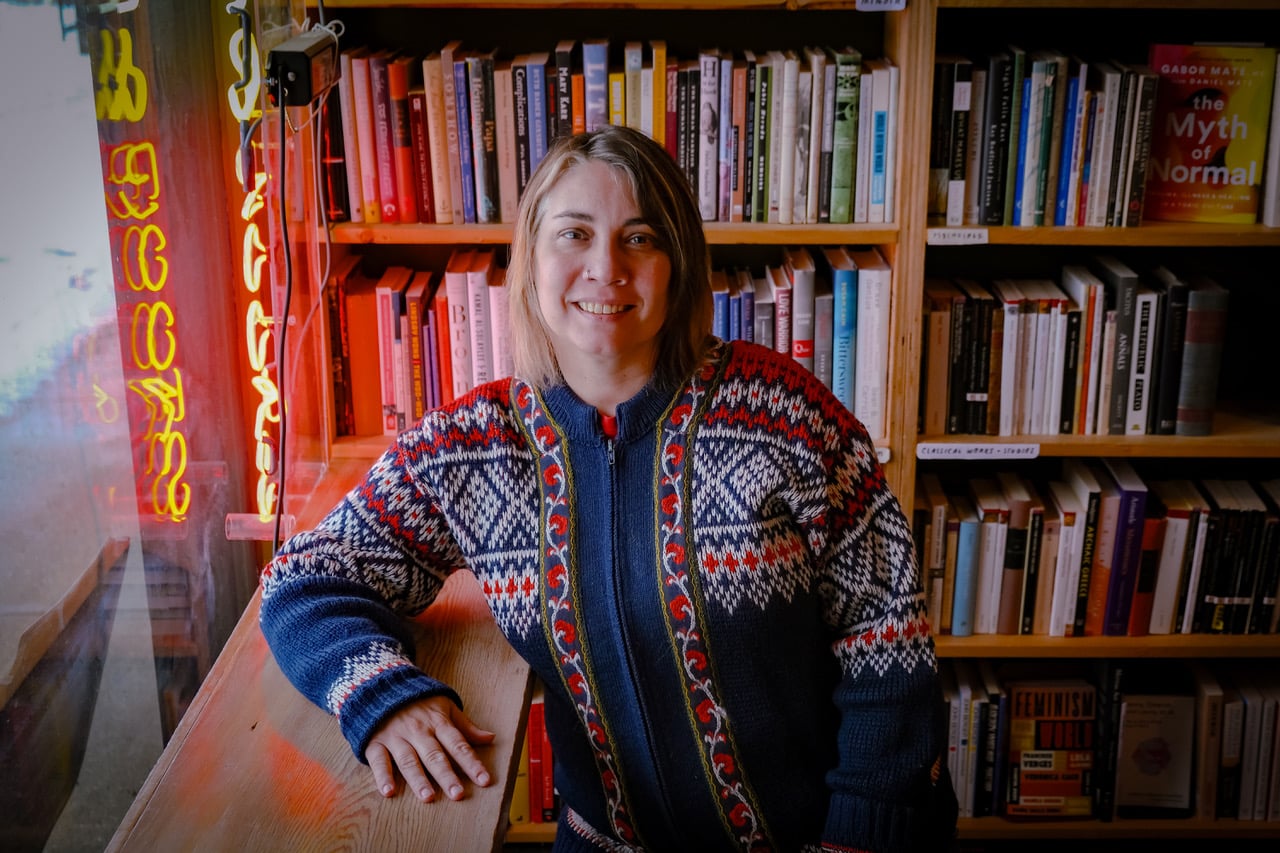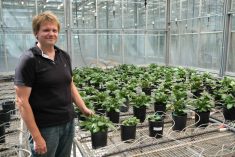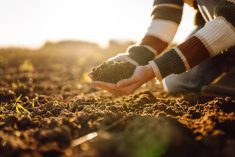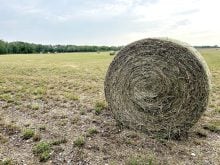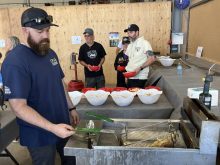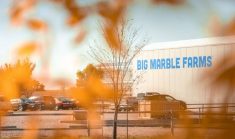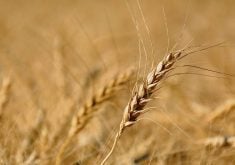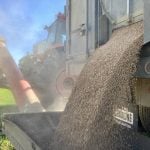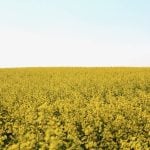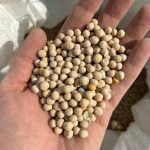Many people have dipped their hands into the dark, earthy soil known as peat moss, but few have thought about the industry’s contribution to Alberta.
Peat moss, also known as sphagnum peat moss, is a natural, organic soil conditioner. It absorbs high amounts of moisture, acting as a sponge to release water as plants need it. It can be used to prevent leaching, aerate heavy clay soil or bind sandy soil.
Peat is a decomposing material created from sphagnum moss in bogs. As the sphagnum moss dies, it builds up faster than it decomposes. This happens due to the slightly acidic nature of the peat and the cold northern climate. The material builds up at a rate of .5 to one millimetre a year.
Read Also
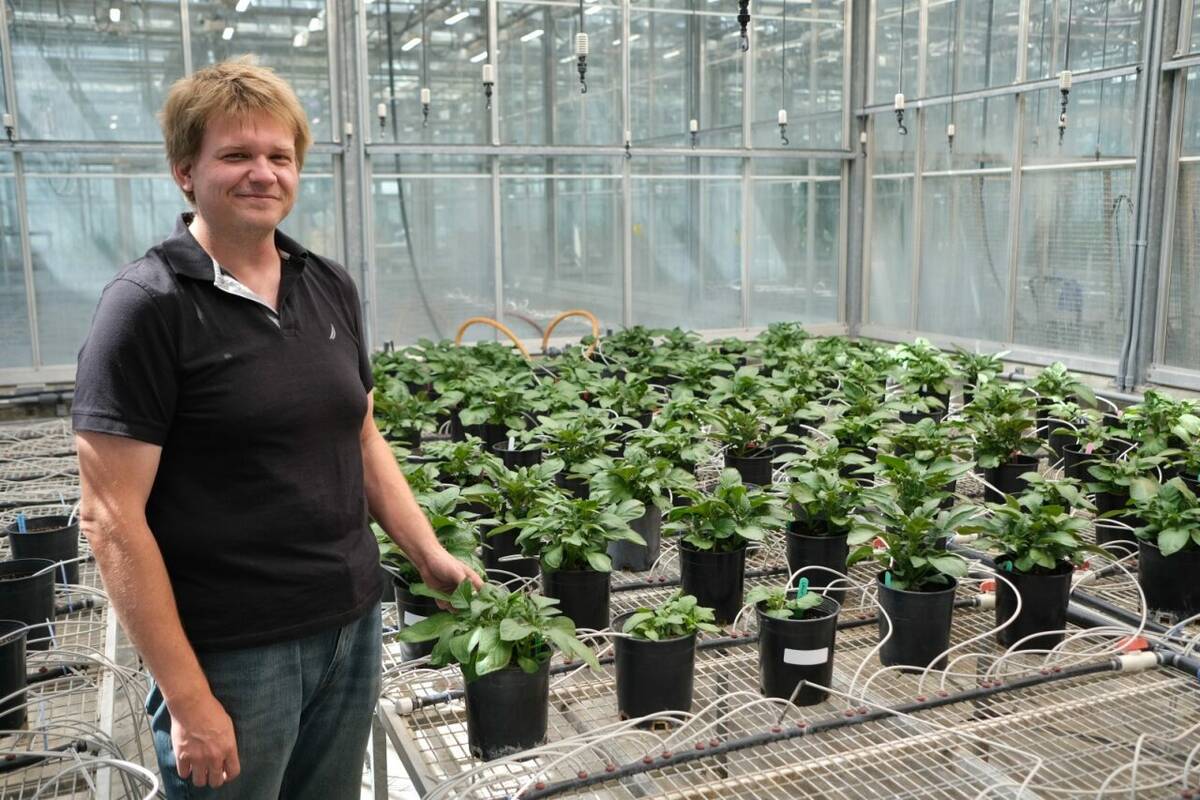
Hail research hopes to benefit potato growers
Alberta research scientist measures hail storm and heat dome affects on potato crops
Peat moss is used to grow bedding plants, in seedling production and in forest nurseries. The material is slightly acidic, and very low in minerals. Growers can add nutrients to peat and customize blends to amend soils. In its natural state, peat is light, spongy and fibrous with colour varying from pale to dark brown to black, depending on the carbon content.
About 80 per cent of domestic production is used by commercial growers and 20 per cent by domestic growers.
Commercial harvesting
Alberta started harvesting peat in the 1960s. Current sales value is about $69 million. About 80 per cent of production is exported to the U.S., and some goes to Japan.
Alberta accounts for only about 17 per cent of the country’s production, even though the province has about 12 million hectares of peatland.
Fewer than 1,000 hectares of Alberta’s peatlands are harvested and only about 4,000 hectares have been affected since the industry’s inception in the province. The province’s peat is in the central and northern boreal areas.
“The industry is rural based so it helps to offset incomes for folks in northeastern Alberta,” said Paul Short, president of the Canadian Sphagnum Peat Moss Association, based in St. Albert.
“Our industry is small, but the resources are large and there are expressions of interest for expansion from the East to the West,” said Short.
The province’s peat industry faces challenges because of relative distance to markets and cost of operations.
“It’s hard to compete in Alberta in terms of manpower requirements,” Short said.
About 160 are employed full time in Alberta’s peat industry, with another 70 seasonal during harvest between April and October.
Active sites are in the Wandering River area, the Athabasca area and the Seba Beach/Wabamun area. There are also sites near Valleyview, Newbrook and Vilna. Three companies, Premier Tech horticulture, Sun Gro horticulture and Alaska Peat, harvest the material and package the material in plants in Seba Beach or Airdrie.
Once a site is selected for harvest, it is enclosed with a peripheral ditch that lowers the water table. After the top vegetative living material is removed, the area is harrowed two inches deep to expose the peat material to dry conditions. Once dry, the peat is collected using a vacuum harvester.
Short said the peatland industry in Alberta is responsibly and reasonably managed. Harvesting is highly regulated through the Public Lands Act. Short and others involved in the industry see the importance of responsibly managing peatlands.
“We value these resources,” said Short. “Our associations are committed to restoring these peatlands post-harvest. “

